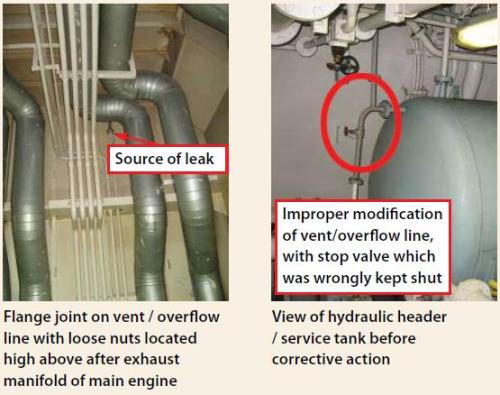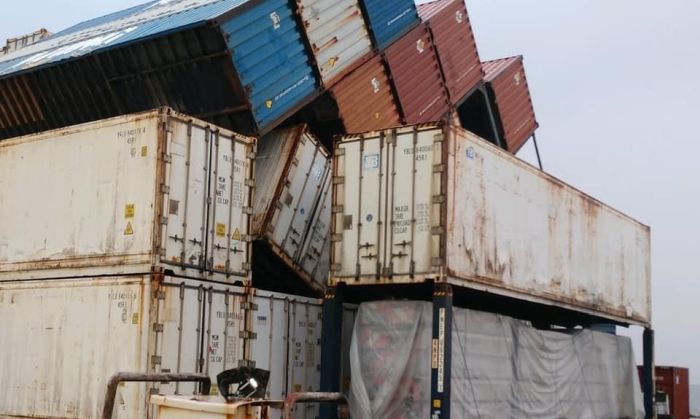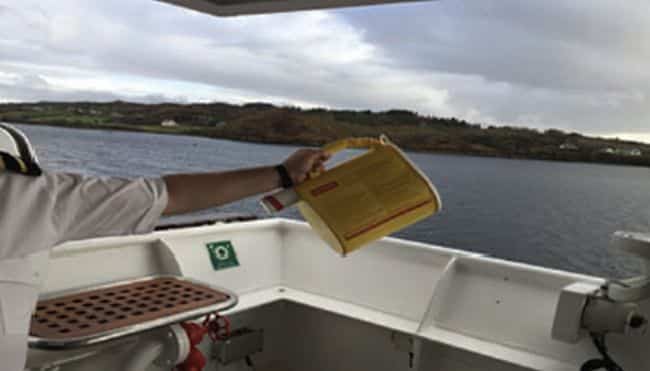Hydraulic Oil Leak Starts Fire in Engine Room
On a tanker on passage, the fire alarm suddenly sounded. At the same time, the engine room crew saw small flames and smoke rising from the after exhaust manifold and cylinder heads of the running main engine. After extinguishing the localized fire, it was discovered that hydraulic oil from the cargo pump system had leaked from a flange connection in the vent/overflow line situated directly above the main engine cylinder head platform.
Result of investigation
At the previous discharge port, a submerged cargo pump hydraulic motor had malfunctioned. In preparation for carrying out repairs, an engineer had closed the vent-cum-overflow line valve located before the service/header tank without draining the line;
Due to the residual pressure in the line, the flange connection (later found to have loose fasteners) leaked and a fine spray of hydraulic oil began falling on the hot surfaces on the top of the exhaust manifold and ignited after attaining self-ignition temperature.
Root cause/contributory factors
Inadequate work planning – line was not depressurised/drained before closing of valve before header tank;
Inadequate management of change – the hydraulic piping had been modified some years ago to tap off a new branch line before the header tank leading to an offline oil filtering system. A stop valve was fitted before the branch without properly assessing risks;
Inadequate communication – the engineer who closed the valve failed to inform other members of this fact.
Corrective/preventative actions
Ship’s staff removed the stop valve from the vent line, and the piping was re-modified to ensure that the offline filtration circuit was independent of the vent/overflow line;
All joints in the hydraulic system lines were inspected for proper condition and tightness;
Sister vessels fitted with the same filtration plant were advised to check the lines to ensure that the overflow line could not be inadvertently shut. All vessels were instructed to thoroughly inspect all nuts and bolts on flange joints and tighten them.
Reference & Image Credits: nautinst
Do you have info to share with us ? Suggest a correction
- Real Life Incident: Vessel Collision in Good Visibility
- Real Life Incident: Severe Injury To Deck Crew While Leaving Berth
- Real Life Incident: Departure Damage in Very Restricted Waterway
- Real Life Incident: Low Situational Awareness Has High Impact Consequence
- Real Life Incident: Fouled Anchor in a Designated Anchorage
- Real Life Incident: Fire On Barge Carrying Scrap Metal Causes $7 Million Worth Of Damage
Latest Case studies Articles You Would Like:
Subscribe To Our Newsletters
By subscribing, you agree to our Privacy Policy and may receive occasional deal communications; you can unsubscribe anytime.

















